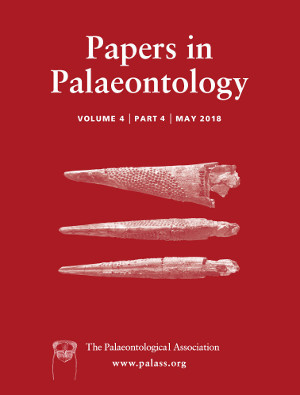Reg. Charity No. 1168330

Henodus chelyops Huene is considered to be a highly autapomorphic cyamodontoid placodont with specialized trophic adaptations relative to all the other members of Placodontia. It has been exclusively found in the Carnian (Upper Triassic) of Tübingen (Germany). Here we present a partial skull identified as a new cyamodontoid placodont from the Upper Triassic of El Atance (Guadalajara Province, Spain), Parahenodus atancensis gen. et sp. nov. It is recognized as the sister taxon of H. chelyops, both taxa composing the clade Henodontidae. An emended diagnosis for H. chelyops and Henodontidae is given here. Parahenodus atancensis shares with H. chelyops several cranial characters considered until now to be autapomorphic for the latter, but it also retains some states common in most cyamodontoids. Thus, the discovery of P. atancensis provides new information on the acquisition process of the highly specialized skull of the Henodontidae.